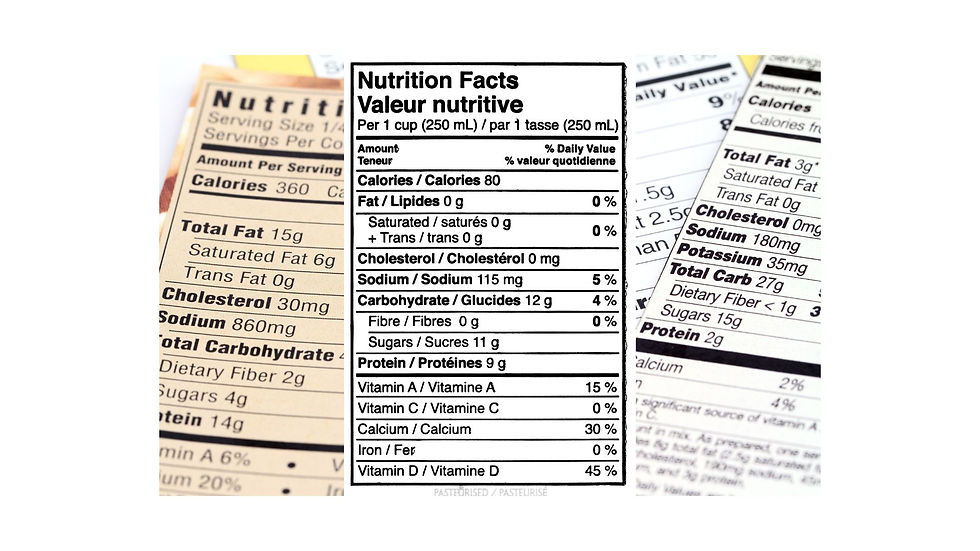The 10% Rule (for reading food labels)
- Kristin Finley, RD/LD
- Apr 30, 2017
- 2 min read
Updated: Dec 25, 2024

Trying to make sense of the Nutrition Facts Label on most foods can be overwhelming. If I taught you everything on a food label, it would be a two-hour class! So I am going to teach you a quick and easy way to get the most return for the least amount of time when reading labels. Use the 10% Rule. Click on the link below to download a copy.
First, you need to go get a package of food with a food label. Crackers, bread or cookies are good ones. Then get your copy of the 10% rule to guidance. Now let's practice.
First, at the top of the label you will see the serving size and how many servings are in the package. The information on a food label is for one serving (it may be the whole package). Look on the right hand side of the label and choose foods that have 10% or less fat and sodium, and 10% or more fiber.
In addition to The 10% Rule, there are a few more points of interest. Since carbohydrates play a significant role in diabetes and/or weight management, it is important to know that a serving size of carbohydrates is 15 grams (look at Total Carbohydrates). This is more important than the grams of sugar when first learning how to read food labels.
In the ingredient list, look for and avoid foods with high fructose corn syrup and/or partially or fully hydrogenated fats/oils, both of which are produced in a lab. Avoid foods with lots of artificial ingredients, colors and flavors. If the food choice is a grain (bread, crackers, cereal, pasta, tortillas, rice), make sure the first ingredient includes the word “whole”, and 10% or more fiber. For example, whole wheat, whole corn, whole oats, etc.
With the above information, you are on your way to learning how to make better choices at the grocery store. If you want more information on reading food labels, check out our web book, Reading Food Labels, in the Products section.

.png)





















